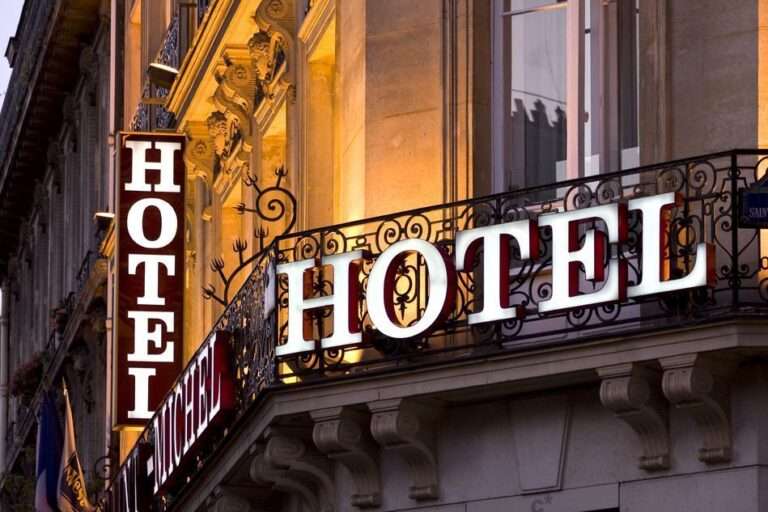If you’re reading this, chances are you’re either an experienced digital nomad or someone thinking about diving into the thrilling lifestyle of working from anywhere in the world. I have been traveling the world solo for over 8 years, and I have learned a lot along the way. Let me share some tips and insights that can make your trip less stressful, more enjoyable, and incredibly productive.
Choosing Your Destination
First things first, picking the right destination is crucial. Look for places with reliable internet, a good expat community, affordable cost of living, and a tolerant culture. Here are some top picks:
- Bali, Indonesia: With beautiful beaches, affordable living, and a huge nomad community, Bali is a paradise for digital nomads.
- Chiang Mai, Thailand: Known for its low cost of living, excellent coworking spaces, and beautiful temples, Chiang Mai is a favorite.
- Lisbon, Portugal: Great weather, friendly locals, and a thriving tech scene make Lisbon a fantastic European base.
- Medellín, Colombia: Once infamous, Medellín offers a unique mix of culture, affordable living, and a growing expat community.
Staying Connected
Reliable internet is a non-negotiable. Always check the internet speed and reliability of your accommodation before booking. Coworking spaces and cafes with strong Wi-Fi are your best friends.
Accommodation Hacks
Finding the right place to stay can make or break your experience. Here are some options:
- Hotels: Sometimes you just need the comfort and service of a hotel, especially if it’s a short stay.
- Apartments: I prefer to book apartments when traveling. This allows me to have a little more space and the comforts of home, like a washer. I also utilize the kitchen and cook American dishes or recreate foreign dishes to my taste. Prices are usually comparable or cheaper than a hotel room.
- Hostels: Before I started traveling internationally by myself, the only experience I had with hostels was that scary movie Hostel. I don’t know why they aren’t publicized more to make Americans more familiar and comfortable with what they are. I recommend the private rooms which usually mean a basic room with a double bed, private shower, and TV. If you choose to stay, you should have your own towel unless you are okay with renting one. Hostels are also an inexpensive way to catch up on laundry. Kitchen facilities are also available.
Getting Around
While traveling, anything can happen. Even if you plan down to the last minute detail, things can go wrong. Sometimes it’s of no fault of your own, like inclement weather. Other times it may be due to you being in a country that does things a little different than you’re used to. Here are some transportation tips to help you navigate:
- Uber: For the countries that have this service, your Uber app will work fine.
- Train: I enjoy taking the train sometimes too. The only thing I don’t like is that trains tend to take more countryside routes, and I miss out on seeing the city. I use Trainline to find the best train prices when traveling abroad.
- Bus: This was an option that I surprisingly enjoy using to travel from city to city, and sometimes country to country. I like that the buses travel on main streets and highways and give you a great chance to see the actual city. There are usually several bus options available, so I use Busbud which aggregates all the different bus companies and routes available.
- Ferry: I like traveling by ferry when my schedule is flexible.
- Taxi: Perfectly fine when traveling. Price will vary depending on the city. Taxify and Yandex (Bitaksi in Turkey) help if you’re in some non-English-speaking country and want an Uber-like experience. This is a must for locations where you don’t know what the normal rates are from point A to B and will keep you from being taken advantage of financially.
- Rental Car: This is going to vary from country to country and your personal comfort level. You can use your valid American driver’s license in most countries to meet the criteria to be a legal driver. This is not my preferred way to travel as I like to be able to look out the window and not have to concentrate on driving, but RentalCars.com is available for car rentals.
- Metro: Metros are usually city-specific. But generally, it is best to have the correct change. Also, don’t be afraid to ask others waiting for the price and etiquette. For example, when in Edinburgh, while waiting at the bus stop, I was told to wave to stop the bus as the bus stop was used for several buses and that’s how the driver knows to stop. Also, a very cheap way to tour a city is to get on the city bus at one location and ride it, returning to the same location.
Flights
- Norwegian Airlines: My absolute favorite airline ever for affordable international flights. I have flown for as little as $150 to Europe (including one checked bag) on this airline. They regularly have flights to Europe all-inclusive for less than $200. The onboard entertainment and Wi-Fi are free. I usually eat before boarding and bring pistachios (I use the air sickness bag for the shells and baby wipes for the residue) and Airheads as snacks, and a bottled water along with off-duty vodka.
- Southwest Airlines: This is my preferred domestic carrier. I like that checked luggage is free. Their customer service is great also. Depending on when you travel, you can get flights for less than $75, but the average flight for the route I fly (TX to East Coast) averages $120.
- Frontier Airlines: I have only flown them once, BUT, the flight was fine and only cost me $20.
Balancing Work and Play
One of the biggest challenges as a digital nomad is balancing work and exploration. Here are some tips:
- Set a Schedule: Try to stick to a routine. This helps in managing your time and avoiding burnout.
- Use Productivity Tools: Tools like Trello, Asana, and Slack can help you stay organized and communicate efficiently.
- Explore in Chunks: Dedicate specific days or parts of the day for exploring. This way, you don’t feel guilty about either work or play.
Health and Wellbeing
Taking care of your health on the road is essential. Here are some tips:
- Stay Active: Find local gyms, join yoga classes, or simply go for a run or hike.
- Eat Healthily: It’s tempting to indulge in all the local delicacies, but try to maintain a balanced diet.
- Health Insurance: Make sure you have international health insurance. Companies like SafetyWing offer plans specifically for digital nomads.
Community and Networking
Being a digital nomad can get lonely, but it doesn’t have to be. Here’s how you can build your community:
- Join Local Meetups: Platforms like Meetup or Facebook groups are great for finding local events.
- Coworking Spaces: These are not just for working but also for networking and making friends.
- Nomad Events: Attend digital nomad conferences and retreats to meet like-minded people.
Financial Tips
Managing finances on the go can be tricky. Here’s how to stay on top:
- Banking: Use online banks like N26 or Revolut that cater to travelers.
- Budgeting: Track your expenses using apps like Trail Wallet or Mint.
- Earnings: Make sure you have multiple income streams. Freelancing, consulting, and passive income sources can provide stability.
Embracing the Culture
One of the best parts of being a digital nomad is immersing yourself in different cultures. Learn a few phrases in the local language, respect local customs, and be open to new experiences.
Safety First
Last but not least, always prioritize your safety. Here are some tips:
- Research: Always research the safety of your destination. Avoid sketchy areas and stay alert.
- Secure Your Belongings: Use anti-theft backpacks and keep your valuables safe.
- Stay Connected: Share your itinerary with someone you trust and check in regularly.
Emergency Contacts
When traveling, it’s crucial to have a list of emergency contacts, especially the American Embassy and local emergency services number. This can save you a lot of hassle in case things go sideways.
Miscellaneous Tips
- eSim Cards: When arriving in a country, get a SIM card. This will allow you to make phone calls back to the United States essentially for free and prevent international charges to your phone bill. SIMs are usually free or a very nominal fee. You can find them at the airport or different stores will have them near their checkout counters. Simply asking anyone “Where can I get a SIM” works too. Then activate the SIM according to the provider’s protocol. Options usually include online or at convenience store registers. I usually get the unlimited package and it averages around $20. This is usually cheaper than any international plan offered by American service providers. It comes in handy to have a local number for calling taxis (some countries want a callback number), ordering food, making local calls, and unlimited data for using apps and maps (looking for a Wi-Fi connection gets old very quickly). Of course, make sure your phone is unlocked first. When you get ready to return to the USA, put your original SIM back in.
- International ATM/Credit Cards: Contact your bank to see whether or not you are charged fees when using your card abroad. I have used both NFCU and USAA with no international fees. USAA ATM fees will be returned.
I hope this guide is useful as a resource to help you navigate the world of international travel as a digital nomad. Remember, it’s not just about working from beautiful locations; it’s about embracing a lifestyle that offers freedom, adventure, and endless learning opportunities.
Happy travels!
Feel free to share your experiences or ask any questions in the comments below. Safe travels! 🌍✈️💻






